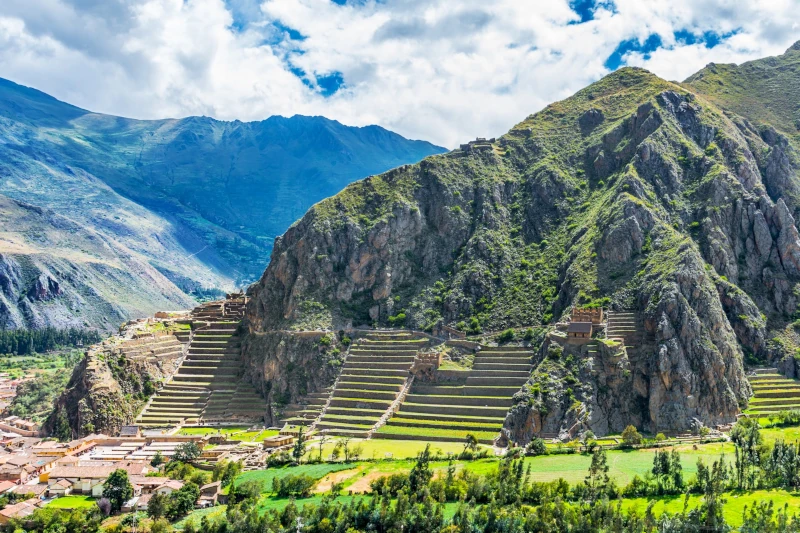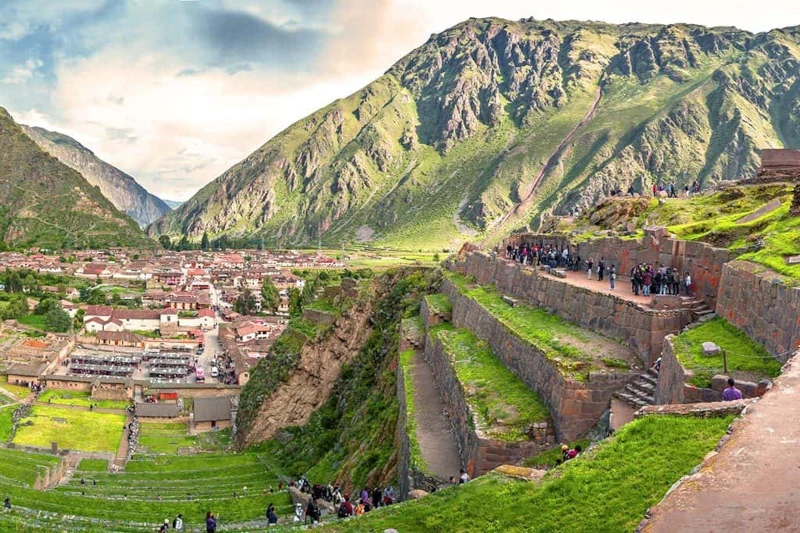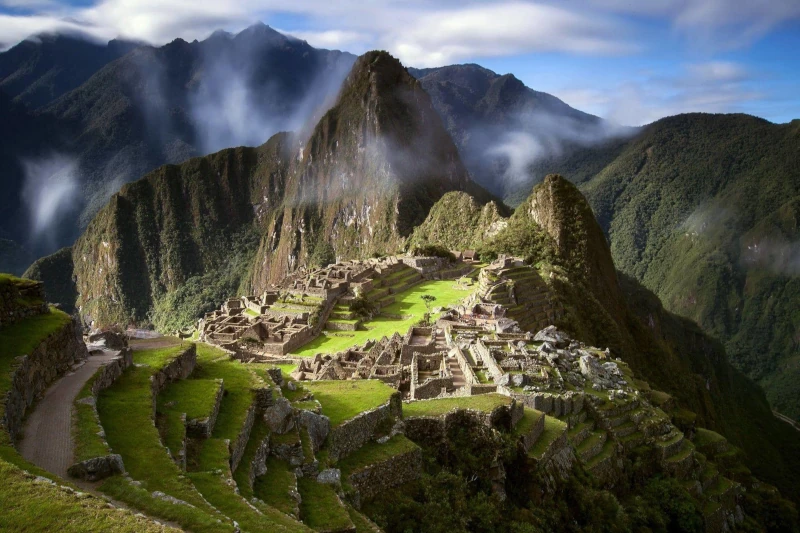Altitude Sickness in Cusco: Are You at Risk?
June 13, 2024Traveling to high altitudes like Cusco poses a risk of altitude sickness. The altitude sickness in Cusco condition affects many visitors each year. Understanding your risk is crucial for a safe trip.
Symptoms of altitude sickness can vary widely. They include headaches, nausea, and dizziness. Recognizing these early signs is key to managing the condition.
Prevention strategies are simple yet effective. Stay hydrated and avoid overexertion upon arrival. Gradually acclimatize to increase your comfort and safety.
This guide will help you assess your risk. It provides essential tips to prevent and manage altitude sickness. Ensure your Cusco adventure is memorable for the right reasons.
Recognizing the Symptoms of Altitude Sickness in Cusco
When you arrive in Cusco, the breathtaking scenery is not the only thing that can leave you breathless. At over 3,400 meters (11,152 feet above sea level), Cusco’s high elevation often triggers altitude sickness.
This condition also known as mountain sickness is often a discomfort. You need some planning to explore this historic city or venture out to Machu Picchu. Understanding and recognizing the early symptoms of altitude sickness is essential for a safe and enjoyable trip.
Early Signs: When to Be Concerned
Altitude sickness in Cusco can manifest within a few hours of elevation gain. The first signs are often subtle, beginning with a headache. You might also experience dizziness and fatigue as your body adjusts to the thinner air. These symptoms can seem mild at first but paying attention to them is crucial for managing your health at higher altitudes.
Nausea is another common early symptom, sometimes accompanied by loss of appetite. It’s important to monitor how you feel, especially during the first couple of days after you arrive in Cusco. Ignoring these initial symptoms can lead to more severe health issues as your body continues to face oxygen scarcity.
Sleep disturbances are also frequent among visitors. You may find it hard to sleep through the night, which can exacerbate other symptoms due to lack of rest. Taking it easy during your first days can help mitigate these effects.

More Serious Symptoms: Knowing When to Seek Help
As altitude sickness progresses, symptoms can become more severe. Shortness of breath is a key indicator that your body is struggling with the altitude. This can occur not only during physical exertion but also while you are at rest. If you notice this symptom, it is important to decrease your activity level and consider seeking medical advice.
Altitude sickness can escalate to high-altitude pulmonary edema (HAPE) or high-altitude cerebral edema (HACE). HAPE involves fluid build-up in the lungs.
You can identify it by extreme fatigue, persistent coughing, and difficulty breathing even when resting. HACE is marked by confusion, inability to walk straight, and behavioral changes. This signalates a serious threat that requires immediate medical intervention.
Prevention: Reducing Your Risk
Preventing altitude sickness begins with a proper acclimatization schedule. Spend a couple of days in Cusco before ascending to higher altitudes like the ones in the Salkantay Trek. This gradual approach allows your body to adapt to the altitude changes more effectively.
Stay hydrated and avoid alcohol or substances that can dehydrate your body or exacerbate symptoms. Also, eating light meals rich in carbohydrates can provide energy without overtaxing your digestive system. Remember, the key to enjoying your visit to Cusco and Machu Picchu lies in taking proactive steps to prevent altitude sickness.
Managing Symptoms: What You Can Do
If you start to feel the effects of altitude sickness, it’s important to act quickly. Resting is crucial—don’t push yourself to continue activities if you’re feeling unwell. Over-the-counter medications like ibuprofen can help alleviate mild symptoms like headaches and nausea.
Using supplemental oxygen can also provide relief, especially if symptoms are related to oxygen deprivation. Many hotels in Cusco offer oxygen service for guests experiencing severe symptoms. Listening to your body and responding appropriately can make all the difference in your recovery.

Enjoying Cusco Safely
Visiting Cusco is an unforgettable experience, rich with cultural history and stunning landscapes. By recognizing the signs of altitude sickness and taking steps to prevent and manage it, you ensure that your memories of Cusco and Machu Picchu are as vibrant as the destinations themselves. Remember, altitude sickness is manageable, and with the right precautions, you can fully enjoy the beauty and mystique of these ancient high-altitude treasures.
Effective Prevention and Treatment Strategies for High Altitude Visitors
When you arrive in Cusco, the gateway to the Jungle Inca Trail and Sacred Valley, the elevation change is immediate and impactful. The city sits at an altitude that can significantly affect unacclimatized travelers. Understanding how to recognize and manage the symptoms of altitude sickness in Cusco is crucial for all visitors.
Initial Symptoms: What to Watch For
Initially, the first indicators of altitude sickness in Cusco often appear subtly. Consequently, visitors may experience persistent headaches that are not typical for them. Moreover, these headaches often worsen at night or during the early morning.
Similarly, fatigue is another common symptom, regardless of the level of physical activity. For instance, you might feel unusually tired after a simple walk. Consequently, this fatigue can make touring the city’s historic sites more challenging.
Additionally, digestive disturbances such as nausea or general stomach discomfort are also common. As a result, these symptoms can decrease your appetite, affecting your energy levels. Therefore, it’s essential to monitor how you feel continually.
Acute Symptoms: Signs of Increased Severity
As altitude sickness progresses, the symptoms can become more acute and harder to ignore. For example, one might experience dizziness or light-headedness even when sitting down. These signs indicate that the body is struggling to adapt to the high altitude.
Furthermore, an increased heart rate is another critical symptom to watch for. If your pulse is fast even at rest, it’s a clear sign of altitude stress. This can occur without any physical exertion.
In severe cases, you may experience shortness of breath while resting. If breathing becomes difficult, it’s vital to seek medical attention immediately. This is a sign that the body is not receiving enough oxygen.
Preventative Measures: Reducing Risk
To minimize the risk of altitude sickness in Cusco, take preventive steps starting the day you arrive. It is advisable to rest during your first day in the city. Avoid strenuous activities that could exacerbate symptoms.
Drink plenty of water to stay hydrated. Altitude can dehydrate you more quickly than at sea level. Avoiding beverages that can cause dehydration, like coffee and alcohol, is also crucial.
We know that you want to enjoy your trip day and night but if you drink alcohol, don’t trek the day after.
Chewing coca leaves, a traditional remedy used by locals, can help alleviate some symptoms. These leaves can reduce the severity of headaches and help with overall discomfort. Many local shops and vendors offer coca leaves specifically for this purpose.

Long-Term Management: Staying Healthy
If you plan to stay in Cusco for more than a few days, managing symptoms becomes part of daily life. Continue to drink plenty of water and rest adequately. Your body may need more time to acclimatize.
Eating small, frequent meals can help maintain your energy. High-carbohydrate foods are particularly beneficial. They are easier to digest and can help maintain energy levels.
Keep monitoring your symptoms. If they worsen or do not improve, consider visiting a healthcare provider. Cusco has several clinics experienced in treating altitude sickness.
Enjoying Cusco with Caution
Cusco serves as a hub for tourists heading to Machu Picchu and even Lake Titicaca or Humantay Lake. By taking the right precautions and knowing how to manage the altitude, you can enjoy all the paths.
Recognize the signs of altitude sickness early. Act quickly to treat symptoms before they become severe. This way, your experience in Cusco will be memorable for all the right reasons.
Altitude sickness in Cusco does not have to derail your plans. With proper preparation and awareness, you can explore the rich cultural heritage and stunning landscapes safely and comfortably. Remember, the key is to acclimatize gradually and take care of your health throughout your journey.



